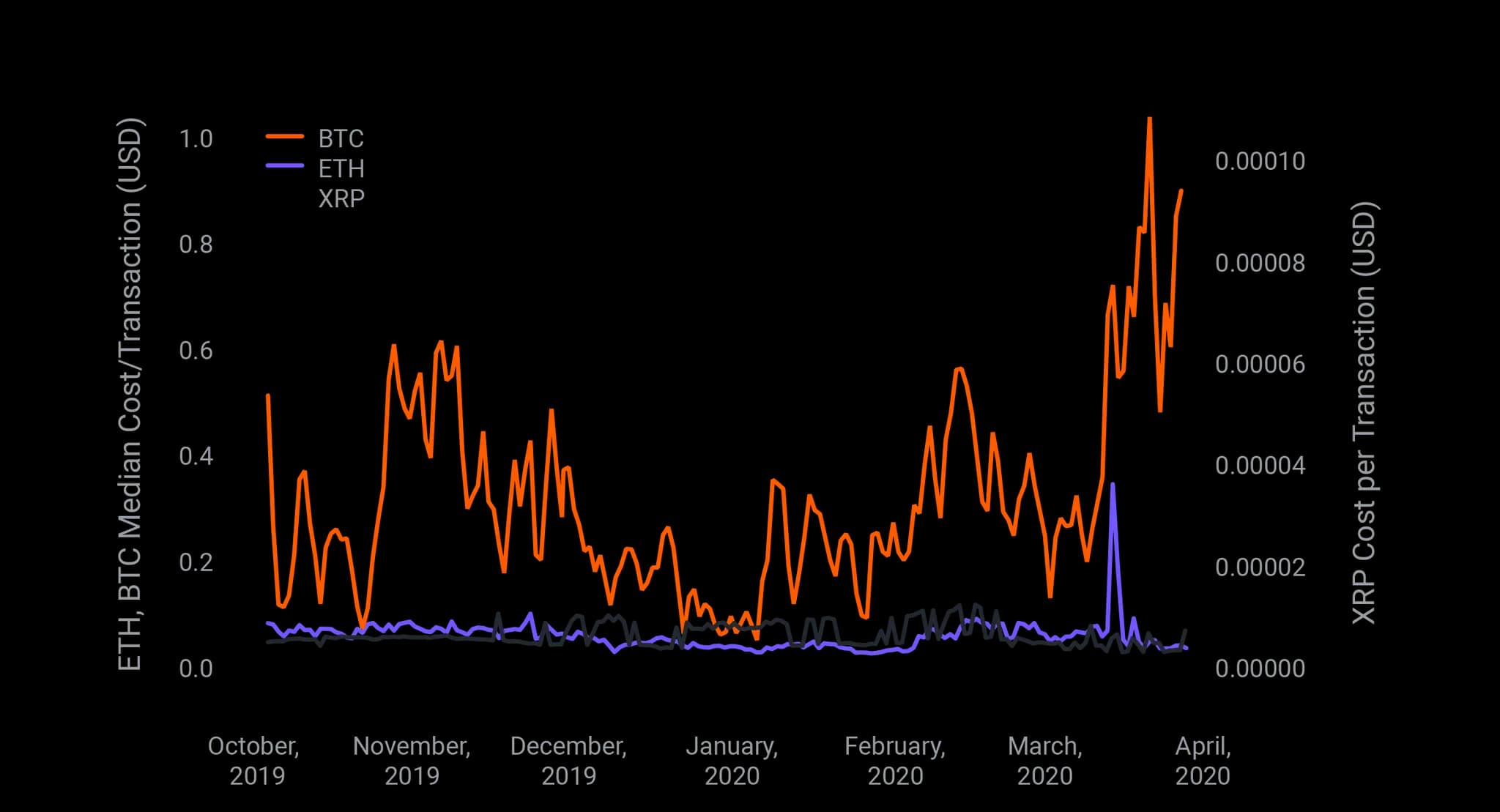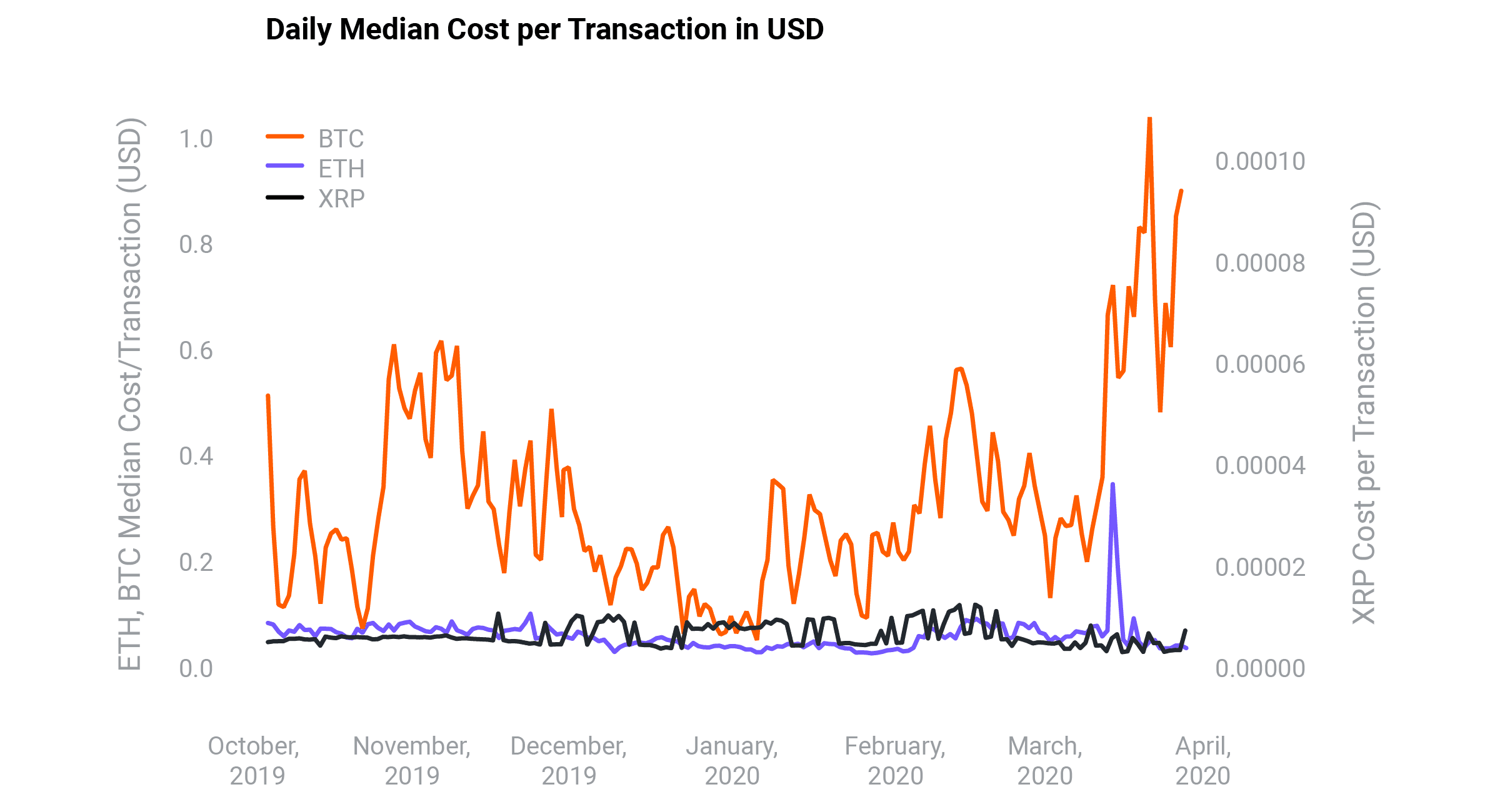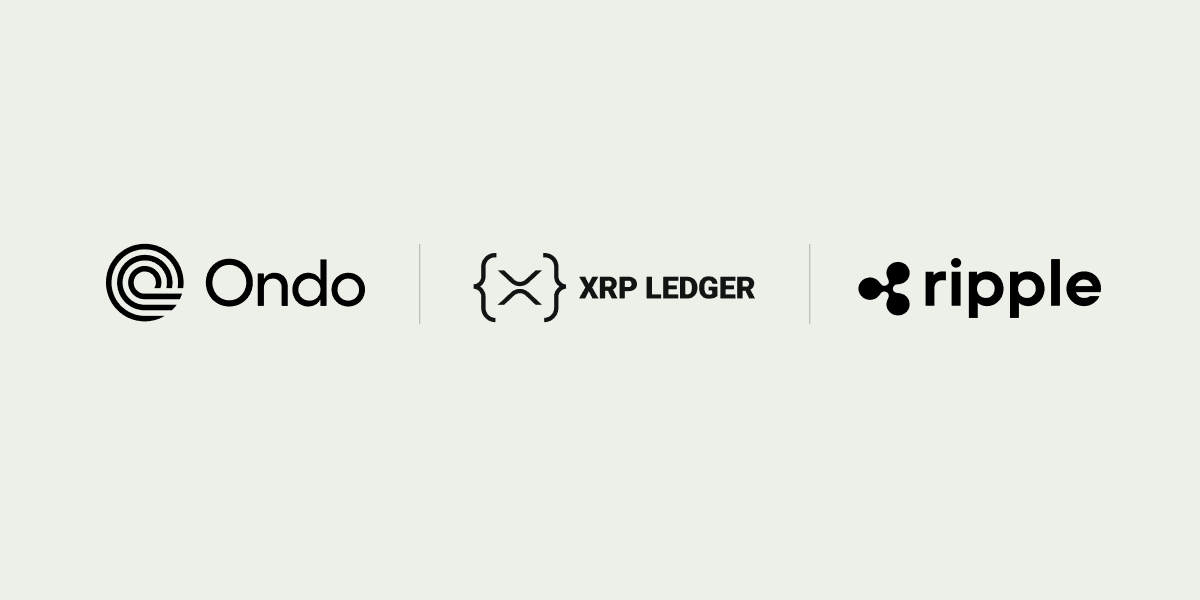Digital assets are often referred to as safe haven assets—assets that market participants turn to during turmoil in financial markets. Today, this label is being tested as COVID-19 impacts global financial markets.
Amidst the sudden market collapse on March 12, 2020—what many are calling “Black Thursday”—daily transaction fees skyrocketed to five times the normal amount on Ethereum and Bitcoin’s network, delaying settlements and increasing the price of exchange for currencies between exchanges. During this time, analysis shows that users began shifting to the digital asset XRP for exchange balance transfers.

Source: Xpring. Median costs were plotted, but mean costs would show more extreme fluctuations and longer recovery periods in BTC and ETH cost per transaction.
XRP’s low transaction fees, reliability and speed make it ideal for sourcing liquidity in cross-border payments. These same attributes also enable market makers and traders to take advantage of arbitrage opportunities intra-exchange—even in times of market stress. Traders and market makers leverage XRP to quickly service margin calls and manage risk/collateral.
To better capture price differences on digital asset exchanges, value needs to move as quickly as possible, often across the world. Because of its unique consensus validation architecture, XRP does this nearly instantly, providing market makers and traders with a high-speed vehicle to move their funds from exchange to exchange. XRP's speed not only allows it to capture more price differences between exchanges, it also reduces the exposure to the various risks involved in those arbitrage trades.
Several of the over 130 exchanges where XRP is listed have noted this global payments use case and taken action. From North America to Asia, they have listed XRP as a base currency, to be paired with fiat currencies and other digital assets in trading.
In a recent post, Bitrue CEO Curis Wang shared his company’s decision to move to XRP. “XRP’s use case makes it both practical and scalable so it made sense for our business to focus on it,” recalled Wang. “As more people turn to RippleNet’s On-Demand Liquidity service for faster, cheaper global payments, Bitrue will grow alongside the increasing use of XRP. We took a chance on centering our platform around the asset and are now benefiting from being a fully integrated part of the XRP community.”
XRP’s low transaction costs allow traders to take advantage of more trading opportunities. Each XRP transaction costs a fraction of a cent, which allows traders to profit from smaller variations in price between exchanges. If capital can move faster and more efficiently, trading will also occur more frequently, which is equally beneficial for exchanges who stand to profit from increased commissions.
XRP’s speed also reduces the need for liquidity providers to hold large inventories of digital assets at multiple exchanges, lowering their working capital needs without lowering their ability to capture trading opportunities. Once a trading opportunity has passed, traders can move their holdings offexchange and keep them wherever they are most comfortable without foregoing future opportunities. This allows traders to minimize their exposure to exchange hacking risk and benefits exchanges by lowering the amount of inventory at risk at any given time.
While some exchanges have begun to issue their own tokens as base currencies, these assets are exchange-specific. They do not allow for fluid trading between exchanges, and they increase risk by encouraging capital pooling. When independent digital currencies like XRP are used as base currencies instead, these challenges disappear, and with XRP specifically, value can move quickly and cheaply to every exchange in the world on which the digital asset is listed.
XRP’s speed, low transaction costs and scalability put the digital asset in a league of its own when it comes to settlement. Over 50M ledgers have safely closed since its inception and many highly regulated financial institutions are already leveraging XRP to improve the global payment experience of their customers.
Ripple is focused on building technology to transform global payments. If you’re a financial institution interested in leveraging RippleNet’s On-Demand Liquidity service, contact us.







